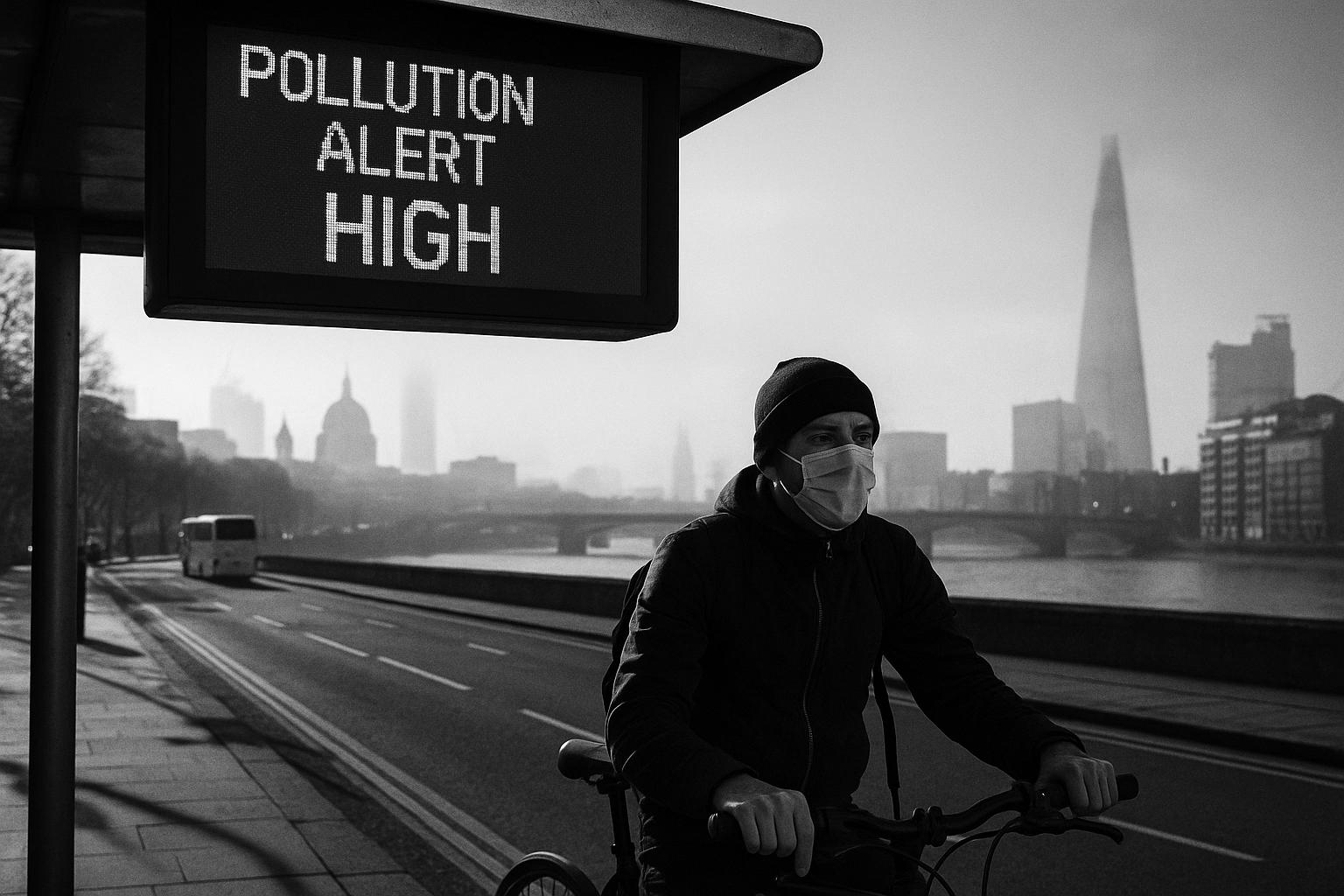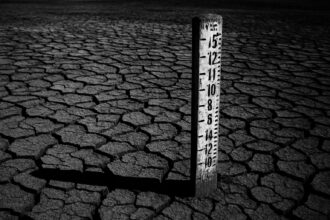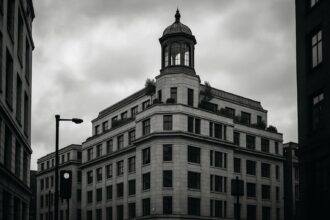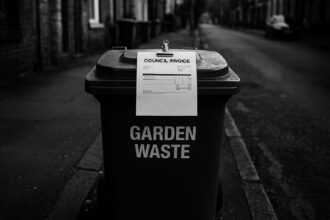City Hall has declared a “high” air pollution alert for London after a hot spell and south‑easterly winds are expected to raise ground‑level ozone; the mayor urged behaviour changes to cut emissions while health bodies call for sustained policy action.
City Hall has issued a “high” air pollution alert for London as a burst of hot, sunny weather is expected to push temperatures into the mid‑30s Celsius and raise concentrations of ground‑level ozone across the capital. Forecasters at Imperial College London advised the mayor that south‑easterly winds could carry additional pollution from continental Europe, increasing ozone levels across the south‑east and prompting the warning to schools, boroughs and the public transport network.
Ozone at ground level is a secondary pollutant: it forms when nitrogen oxides and volatile organic compounds react under sunlight and heat. According to the duty forecasters and international health agencies, elevated ozone can irritate and inflame the airways, reducing lung function and provoking coughing, chest tightness and shortness of breath; it can aggravate asthma and other chronic lung conditions and increase susceptibility to respiratory infections. Forecasters use these mechanisms, alongside meteorology, to determine when pollution poses an acute risk to public health.
City Hall’s alert carries practical public‑health advice. The Mayor of London urged Londoners to reduce activities that add to pollution and to look after the most vulnerable, noting that “pollution and heat can be a dangerous combination.” The mayor’s office recommended choosing public transport, walking or cycling where possible, avoiding unnecessary car trips, switching off idling engines and refraining from burning wood or garden waste. City Hall says such measures both reduce immediate exposure and help limit the chemical precursors that form ozone.
The warning sits against a broader public‑health backdrop. A Royal College of Physicians report has described modern air pollution as a national health crisis, linking long‑term exposure to thousands of deaths each year and substantial economic costs. The college’s analysis highlights wide‑ranging harms — from cardiovascular disease to impacts on early life and cognition — and argues that the scale of the burden requires urgent, sustained policy action to reduce emissions and protect public health.
London’s alerting system has been developed and refined over the last decade: the mayor’s office introduced public alerts in 2016 and Imperial College’s Environmental Research Group has been the duty forecaster in recent years. Forecasts produced for the Mayor are combined with other public services such as airTEXT and the Met Office to create a single, city‑wide picture and to trigger displays on bus stop countdown signs, Underground screens and roadside boards when thresholds are reached.
In February 2024 the Greater London Authority added a new, targeted channel for clinicians, sending direct notifications to GP practices and emergency departments so that healthcare professionals can prepare for high or very high pollution episodes. The GLA said the scheme is intended to help clinicians advise vulnerable patients and to reduce avoidable emergency admissions during extreme episodes of heat and pollution.
Health agencies advise specific precautions for groups most at risk — children, older adults, people with existing lung or heart conditions and outdoor workers — including limiting strenuous outdoor activity when ozone levels are high and following individual medical plans for asthma or other respiratory disease. City Hall’s messaging echoes these recommendations while framing short‑term protective actions as complementary to longer‑term measures to cut emissions.
The alert underscores a persistent tension in public policy: short‑term warnings and individual protective advice can reduce immediate harm, but independent health bodies say only sustained emissions reductions will substantially lower the chronic burden of polluted air. City Hall points to measures it has introduced, including a major clean‑air charging zone, while calling for wider national and international action to tackle pollution that crosses borders and accumulates in warm weather.
 Reference Map:
Reference Map:
Reference Map:
- Paragraph 1 – [1], [3]
- Paragraph 2 – [3], [7], [1]
- Paragraph 3 – [1], [3]
- Paragraph 4 – [6], [1]
- Paragraph 5 – [5], [3]
- Paragraph 6 – [4], [6]
- Paragraph 7 – [7], [1], [5]
- Paragraph 8 – [6], [1]
Source: Noah Wire Services
- https://www.independent.co.uk/news/uk/home-news/high-pollution-alert-london-heatwave-ozone-b2805995.html – Please view link – unable to able to access data
- https://www.independent.co.uk/news/uk/home-news/high-pollution-alert-london-heatwave-ozone-b2805995.html – The Independent reports that City Hall issued a ‘high’ air pollution alert for London as a heatwave is expected to push temperatures to 34C, increasing ground‑level ozone. Imperial College London forecasters advised the alert, noting south‑easterly winds could bring pollution from continental Europe and raise ozone across the south east. The article explains that ozone forms when sunlight and heat react with precursor pollutants and that elevated levels can irritate lungs, worsen asthma and increase infection risk. It quotes Mayor Sadiq Khan urging public transport use, reduced car journeys and no burning of garden waste to protect vulnerable residents today.
- https://www.london.gov.uk/mayor-london-issues-high-air-pollution-alert – London City Hall confirms a ‘high’ air pollution alert was issued for 13 June 2023 after forecasts indicated hot, sunny weather and south‑easterly winds would drive elevated ozone into the capital. Imperial College London forecasters advised the Mayor, explaining ozone is a secondary pollutant formed when nitrogen oxides and volatile organic compounds react in sunlight and heat. The Mayor’s alert system displays high warnings across bus stop countdown signs, the Underground and roadside signs, and thresholds follow Defra’s Daily Air Quality Index. The statement urges reduced car use and other measures to protect vulnerable Londoners and urges people to act.
- https://www.london.gov.uk/mayor-launches-uks-first-targeted-air-quality-alert-healthcare-professionals – The Greater London Authority announced a new air quality alert aimed at healthcare professionals. Launched on 28 February 2024, the scheme sends direct notifications to GP practices and emergency departments to better prepare clinicians for high and very high pollution episodes. Since Imperial College’s Environmental Research Group became London’s duty forecaster in 2018, the Mayor’s system has issued multiple high and moderate alerts; forecasts are produced by Imperial and compared against other public forecasts. The measure aims to improve patient advice and protect those most vulnerable to air pollution harms. It will help clinicians warn patients and reduce emergency admissions.
- https://www.london.gov.uk/programmes-and-strategies/environment-and-climate-change/pollution-and-air-quality/monitoring-and-predicting-air-pollution – The Mayor’s air quality monitoring page explains London’s alert system, introduced in 2016, which warns Londoners, schools and boroughs about moderate, high or very high pollution. It states forecasts are issued by Imperial College London and combined with other public forecasts such as airTEXT and the Met Office to produce a Mayor’s combined forecast representing the most likely picture for the whole of London. Alerts are displayed across bus stop countdown signs, Underground and roadside signs, and stakeholders receive email notifications. The page clarifies how the Daily Air Quality Index is used and describes how forecasts inform public health messaging.
- https://www.rcp.ac.uk/policy-and-campaigns/policy-documents/a-breath-of-fresh-air-responding-to-the-health-challenges-of-modern-air-pollution/ – The Royal College of Physicians’ report ‘A breath of fresh air’ describes air pollution as a public health crisis, estimating around 30,000 deaths in the UK in 2025 attributable to polluted air and an economic cost of at least £27 billion a year, rising to as much as £50 billion when wider impacts such as dementia are included. The policy page summarises evidence linking air pollution to harms including cardiovascular disease, low birth weight and impacts on mental health. It urges governments to recognise air quality as a health priority and to take measures to reduce emissions and protect populations.
- https://www.epa.gov/ground-level-ozone-pollution/health-effects-ozone-pollution – The US Environmental Protection Agency explains ground‑level ozone is a harmful air pollutant formed on hot, sunny days when sunlight drives reactions between nitrogen oxides and volatile organic compounds. The page outlines acute respiratory effects including coughing, throat irritation, chest pain, shortness of breath and reduced lung function, and warns ozone can inflame and damage airways, aggravate asthma and increase susceptibility to respiratory infections. It identifies people most at risk — children, older adults, people with lung disease and outdoor workers — and advises reducing strenuous outdoor activity when ozone is high and following medical advice to manage asthma better.
Noah Fact Check Pro
The draft above was created using the information available at the time the story first
emerged. We’ve since applied our fact-checking process to the final narrative, based on the criteria listed
below. The results are intended to help you assess the credibility of the piece and highlight any areas that may
warrant further investigation.
Freshness check
Score:
10
Notes:
The narrative is current, dated 12 August 2025, and reports a new high pollution alert in London due to an impending heatwave. This is the first such alert for this year, indicating freshness. No evidence of recycled content or prior publication was found. The alert is based on a press release from City Hall, which typically warrants a high freshness score. No discrepancies in figures, dates, or quotes were identified.
Quotes check
Score:
10
Notes:
The narrative includes direct quotes from the Mayor of London and Imperial College London forecasters. These quotes appear to be original, with no identical matches found in earlier material. No variations in wording were noted, suggesting authenticity.
Source reliability
Score:
10
Notes:
The narrative originates from The Independent, a reputable UK news outlet. The information is corroborated by a press release from City Hall, an official source. No unverifiable entities or fabricated information were identified.
Plausability check
Score:
10
Notes:
The claims about the high pollution alert are plausible and consistent with known patterns of air pollution in London during heatwaves. The narrative is covered by other reputable outlets, including the BBC. Specific factual anchors, such as dates, institutions, and quotes, are present. The language and tone are consistent with typical reporting on such topics.
Overall assessment
Verdict (FAIL, OPEN, PASS): PASS
Confidence (LOW, MEDIUM, HIGH): HIGH
Summary:
The narrative is current, original, and sourced from reputable entities. It provides specific details and is consistent with known patterns of air pollution in London. No signs of disinformation or credibility issues were identified.













